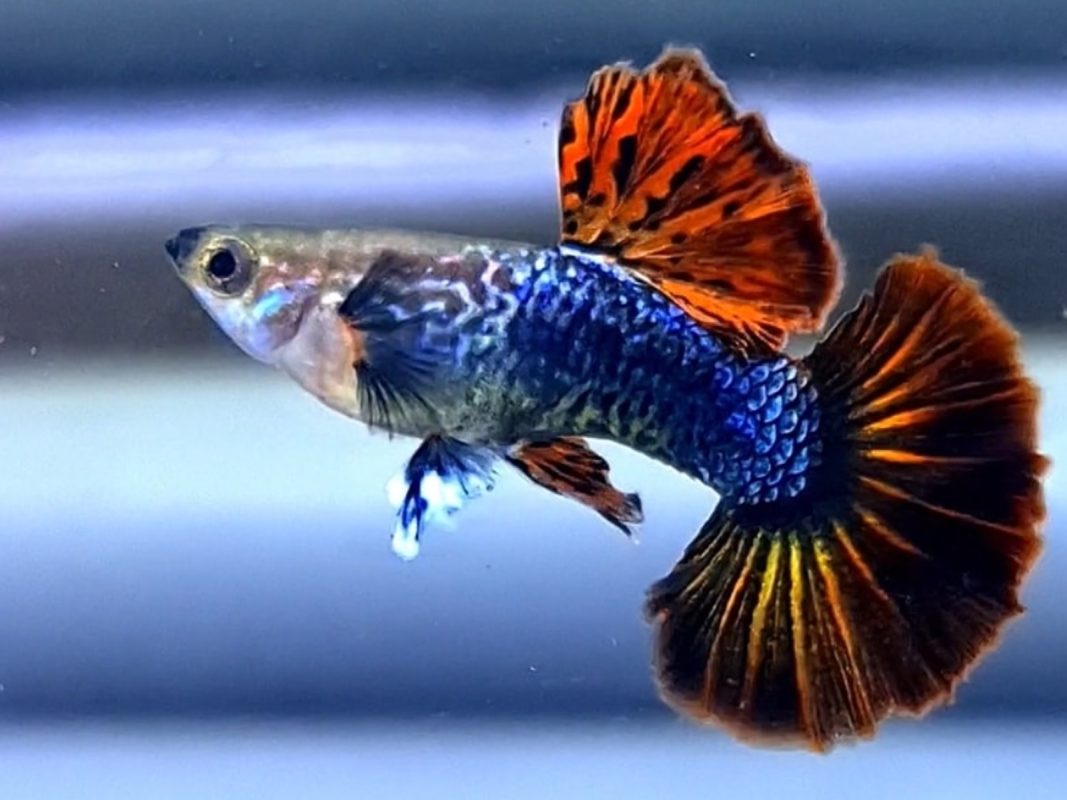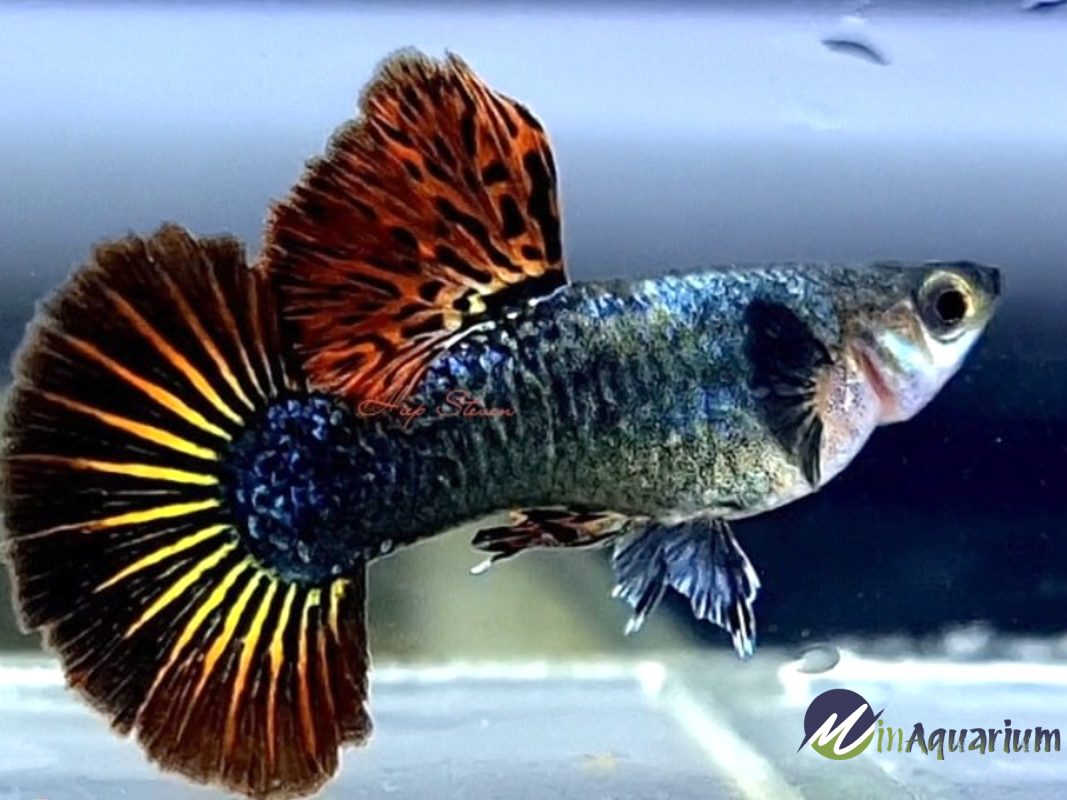Blogs
Guppy Fish | A Comprehensive Guide for Aquarium Enthusiasts
Guppy, with their vibrant colors and lively personalities, are a staple in the aquarium hobby. These small, live-bearing fish are not only beautiful but also relatively easy to care for, making them a popular choice for beginners and experienced aquarists alike. In this comprehensive guide, we will delve into the fascinating world of guppies, covering everything you need to know to keep these dazzling creatures thriving in your aquarium.
Guppy Fish: An Overview
Origin and Distribution
The guppy, scientifically known as Poecilia reticulata, originates from the northeastern region of South America. However, due to their adaptability and popularity as aquarium fish, they have been introduced to various environments worldwide. Today, guppies can be found in warm waterways on every continent except Antarctica.
Physical Characteristics
Guppies are small fish, typically reaching a maximum size of 2.4 inches. They exhibit sexual dimorphism, with males being smaller and more vibrantly colored than females. Wild-type females are generally grey in body color, while males display a wide variety of dazzling color patterns. The development and expression of these colors are influenced by the amount of thyroid hormone in the male guppies, which also controls their endocrine response to the environment.
Diet and Behavior
Guppies are omnivores and feed on a variety of food sources in the wild, including benthic algae and aquatic insect larvae. In captivity, they can be fed a balanced diet of flake foods, pellets, bloodworms, and brine shrimp. Guppies are generally peaceful fish, but nipping behavior may be observed between males or towards other fish with prominent fins.
Reproduction and Lifespan
Guppies are live-bearers, meaning they give birth to live young instead of laying eggs. Females can store sperm for multiple spawns, resulting in frequent reproduction. The gestation period for guppies is about 26-30 days, and they can produce up to 100 fry per brood. Guppies have a relatively short lifespan, typically living for 2-3 years in captivity.

Setting Up a Guppy Aquarium
Tank Size and Requirements
Guppies can be kept in relatively small aquariums, with a minimum of 10 gallons recommended for a small group of fish. The tank should be equipped with a filter, heater, and adequate lighting. A substrate such as gravel or sand can be added to the bottom of the tank.
Water Parameters
Guppies prefer hard water with a pH between 7.0 and 8.5. The water temperature should be maintained between and 82°F. Guppies can tolerate salinity levels up to 150% of normal seawater. It is crucial to perform regular water changes to maintain optimal water quality.
Tank Decoration
Guppies appreciate a well-decorated aquarium with plenty of live plants and soft décor items. Plants not only provide aesthetics but also offer hiding places for the fish and help maintain water quality. Avoid sharp or rough decorations that could injure the fish.
Choosing Guppy Tankmates
Compatible Species
Guppies are generally peaceful fish and can be kept with a variety of non-aggressive fish species. Some good tankmates for guppies include platys, mollies, neon tetras, and cory catfish. However, it’s important to consider the potential for guppies to breed rapidly. It is recommended to separate males and females in different tanks to control population growth if desired.
Incompatible Species
Avoid keeping guppies with larger or more aggressive fish that could prey on them. Additionally, fish with long, flowing fins may be nipped at by guppies.
Guppy Care and Feeding
Feeding
Guppies are not picky eaters and can be fed a variety of foods, including flake foods, pellets, bloodworms, and brine shrimp. It is recommended to feed guppies small amounts of food several times a day.
Disease Prevention
Guppies are susceptible to various fish diseases, including Ichthyophthirius multifiliis (Ich). Maintaining a clean tank, a balanced diet, and regular monitoring can help prevent these diseases.
Guppy Breeding
Sexing Guppies
Male guppies are typically smaller and more vibrantly colored than females. Additionally, males have a modified anal fin called a gonopodium, which is used to transfer sperm to the female.
Breeding Setup
To breed guppies, you will need a separate breeding tank with a heater and filter. The tank should be well-planted to provide hiding places for the fry.
Breeding Process
Once the female guppy is gravid (pregnant), she will give birth to live young. The fry are very small and should be fed specialized foods designed for fry.
FAQs
1. How long do guppies live?
Guppies typically have a lifespan of 2-3 years in captivity.
2. What is the best water temperature for guppies?
The ideal water temperature for guppies is between 78 and 82°F.
3. What do guppies eat?
Guppies are omnivores and can be fed a variety of foods, including flake foods, pellets, bloodworms, and brine shrimp.
4. How often should I change the water in my guppy tank?
It is recommended to perform partial water changes of 20-30% every week.
5. How many guppies can I keep in a 10-gallon tank?
A 10-gallon tank can comfortably house a small group of 5-6 guppies.
Conclusion
Guppies are a wonderful addition to any aquarium, offering vibrant colors, lively personalities, and relatively easy care. By following the guidelines outlined in this comprehensive guide, you can provide your guppies with a happy and healthy environment where they can thrive and bring you years of enjoyment.

